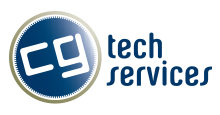Serverless computing is one way to reduce management burdens brought about by the need to configure several servers. But before you adopt this technology, it’s important that you first understand its basic principles as well as how you can leverage it to improve your day-to-day operations and, ultimately, your bottom line.
Running Windows on Macs through VMs
If you own an Apple computer, you might think it’s impossible to install Windows-based software on it. But with operating system (OS) virtualization, you can run any application you want and enjoy exciting new cross-platform features.
Configure an entire machine with a few clicks
With programs like VMware and Parallels, installing Microsoft’s OS on your Mac is almost as easy as creating a new document in Office.
Should I choose virtualization or the cloud?
Have you heard about cloud computing and virtualization technologies but don’t know the difference? Or maybe you’ve heard a fellow business owner talk about why one is better than the other? Here are the differences between the two and the things you must know to determine which solution is best for your business.
Container facts you’re misunderstanding
Virtualization and container technologies are confusing topics in their own right, and comparing and contrasting them is even harder. To understand the differences between container and virtualization technologies, it’s best to clear up some commonly misunderstood information on how they work.
App virtualization: What you need to know
As a small- or medium-sized business (SMB) owner, you need to stay on top of IT trends to get ahead. However, many new IT solutions are quite confusing. One of those is app virtualization. To clear up the confusion, here is a quick overview of what it’s all about.
Hyperconvergence: IT for SMBs
Routers, switches, modems, gateways, firewalls, servers, and storage devices — these are just some of the many machines you need to build a network infrastructure that enables effective internal and external communications. Even when pared down to serve fewer users, the costs of building a similar infrastructure were prohibitive for SMBs, at least until hyperconvergence came along.
Choose from these 5 virtualization options
Keeping up with tech trends as a small- or medium-sized business owner is tough. Virtualization is a great example of this. From the boost to network security and ability to scale your workstations and servers according to your business growth, it’s time to start learning more about it.
